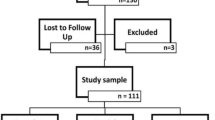Abstract
Background. Pyeloplasty is an established treatment for pelviureteric junction (PUJ) obstruction. The postoperative change in the size of the renal pelvis and the kidney parenchyma are variable. Objective. To document the changes in renal pelvic size and renal parenchymal thickness following pyeloplasty and to establish that improvement of both parameters are good markers for improved urine flow. Materials and methods. A group of 267 newborns and young infants with suspected PUJ obstruction were investigated by ultrasound. Pyeloplasty was performed on 102 babies, and 165 patients were followed conservatively. Postoperative ultrasonography at 6 and 12 months was available in 88 patients. Results. One year after surgery, the renal pelvis was smaller in 76 % of the cases. The renal parenchyma was normal or had increased in 92 % of cases. Conclusion. Resolution of hydronephrosis after surgery is relatively slow, but renal parenchymal growth is rapid. Mild postoperative pelvic dilatation is frequent and does not indicate continued obstruction.
Similar content being viewed by others
Author information
Authors and Affiliations
Additional information
Received: 14 April 1997 Accepted: 1 October 1997
Rights and permissions
About this article
Cite this article
Kis, É., Verebély, T., Kövi, R. et al. The role of ultrasound in the follow-up of postoperative changes after pyeloplasty. Pediatric Radiology 28, 247–249 (1998). https://doi.org/10.1007/s002470050342
Issue Date:
DOI: https://doi.org/10.1007/s002470050342




